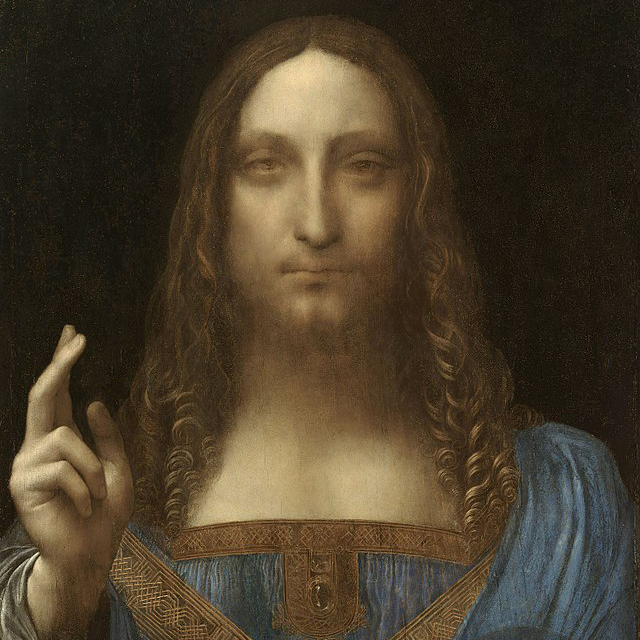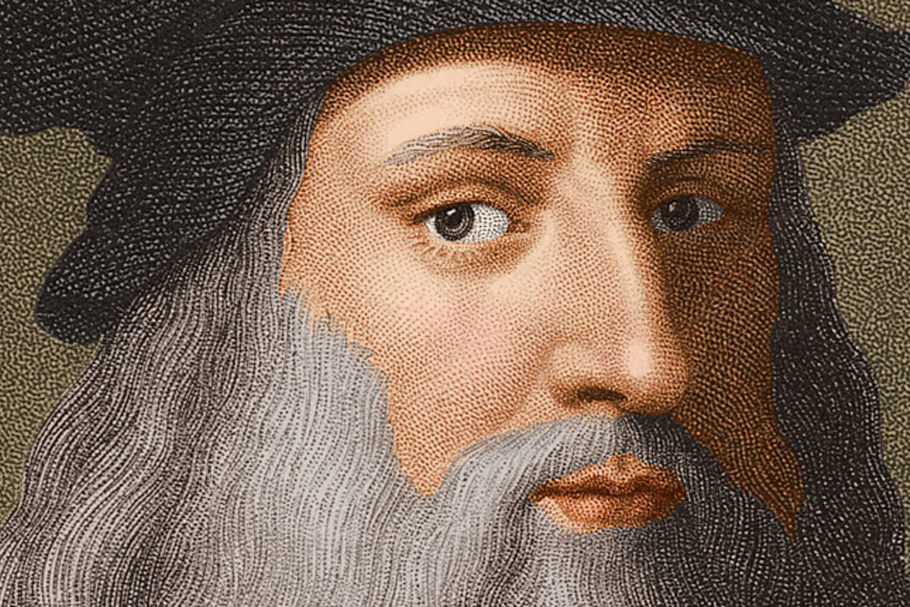Biography of Leonardo da Vinci
Leonardo da Vinci ( 15 April 1452 – 2 May 1519) was born in Anchiano, Tuscany (now Italy), close to the town of Vinci that provided the surname we associate with him today.
He was the illegitimate son of the famous Florentine notary – Ser Piero and a young peasant woman named Caterina. During his early years, da Vinci was raised by his father and stepmother.
At the age of 5, he moved into his father’s estate located near Vinci. There, he lived with his uncle and grandparents.
Da Vinci was not fully educated, he was taught only basic reading, writing and mathematics. But his artistic talent was evident from an early age.
Around the age of 14, da Vinci began studying and working for the famous artist Andrea del Verrocchio in Florence. During this six-year period, he learned a number of different techniques and skills including metalworking, leather art, carpentry, drawing, painting, and sculpture.
Leonardo da Vinci’s first works
At the age of 20, Leonardo da Vinci qualified to become a master painter in the Guild of Saint Luke, Florence and even opened his own studio. However, he continued to collaborate with del Verrocchio for 5 years.
It is thought that del Verrocchio completed the painting Baptism of Christ in 1475 with the help of his student, who painted part of the background and the little angel holding the cloak of Jesus.
Leonardo da Vinci showed a talent for painting from a very young age.

According to Lives of the Most Best Painters, Sculptors and Architects, written around 1550 by the artist Giorgio Vasari, del Verrocchio felt so insignificant in front of his pupil’s transcendent talent that he never held his paintbrush again. (Most scholars, however, consider Vasari’s narration to be a fabrication.)
In 1478, after leaving del Verrocchio’s studio, da Vinci received his first independent commission for an altarpiece located inside the Palazzo Vecchio, Florence.
Three years later, the Augustinians of San Donato a Scopeto, Florence assigned him to paint the Adoration of the Magi. However, the young artist left the city, giving up both commissions and never completing them.
Top 4 most famous artworks of Leonardo da Vinci
The painting “Vitruvian Man” (Proportions of the human body according to Vitruvius)
Art and science intersect perfectly in Leonardo da Vinci’s “Vitruvian Man” sketch, painted in 1490. The painting depicts a nude male figure in two overlapping poses with arms and his feet are inside both the square and the circle.
This famous sketch represents da Vinci’s research on proportion and symmetry, as well as his desire to relate people to the natural world.
Painting “The Last Supper”
The first is da Vinci’s “The Last Supper,” painted during his time in Milan, from about 1495 to 1498. A tempera and oil mural on plaster, “The Last Supper” was created for the refectory of the city’s Monastery of Santa Maria delle Grazie.
This masterpiece took about three years to complete. It records the drama of the moment when Jesus informed the Twelve Apostles gathered at the Passover dinner that one of them would soon betray him. The facial expressions and body language of the characters around the dining table are very vivid through Leonardo da Vinci’s drawings.
The fact that Leonardo da Vinci decided to paint with glue and oil on dry plaster instead of painting on fresh plaster caused the painting to deteriorate and peel off quickly. Although improper restoration caused further damage to the mural, it has now been stabilized by using modern conservation techniques.
Painting “Mona Lisa”
In 1503, Leonardo da Vinci began painting his most famous artwork, and arguably the most famous painting in the world – “Mona Lisa”.
There are many theories and stories behind this work. Some think that the girl in the picture has jaundice. Many people believe that it is a piece of cloth of a pregnant woman. And others suggested that it wasn’t a woman at all, but a man in scissors. Of course, that’s just speculation. It is the theories surrounding this work that have contributed to increasing the attractiveness of the “Mona Lisa” painting.
However, based on an early biographer’s narration, the “Mona Lisa” is a painting by Lisa del Giocondo, the wife of a wealthy Florentine silk merchant. The original Italian name of the painting is “La Gioconda” (but it documents proof). Some art historians believe that the merchant ordered the portrait to commemorate the birth of the couple’s next child, which means the woman may have been pregnant at that time.
If the Giocondo family had actually ordered the painting, they would never have received it. For da Vinci, “Mona Lisa” is forever a work in progress, as it is his final attempt, and he never parted with the painting. The painting itself was kept beside Leonardo da Vinci until his death. Today, the painting “Mona Lisa” hangs in the Louvre Museum in Paris, France. The artwork is protected by bulletproof glass and regarded as a priceless national treasure seen by millions of visitors each year.
Painting “Battle of Anghiari”
In 1503, Leonardo da Vinci also began to work on the painting “Battle of Anghiari”. This is the mural commissioned for the hall in Palazzo Vecchio, double size of “The Last Supper”.
But two years later, he abandoned the “Battle of Anghiari” project when the mural began to deteriorate before he had a chance to finish it.



